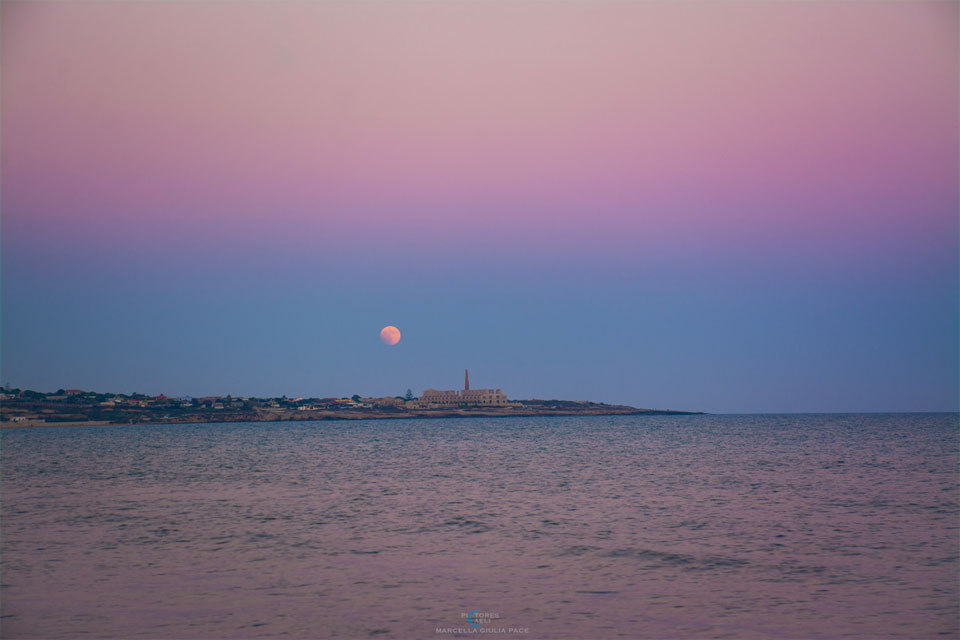2023年5月9日
Shadows of Earth
Image Credit & Copyright: Marcella Giulia Pace
Explanation: Can you find two Earth shadows in today’s image? It’s a bit tricky. To find the first shadow, observe that the top part of the atmosphere appears pink and the lower part appears blue. This is because the top half is exposed to direct sunlight, while the lower part is not. The purple area in between is known as the Belt of Venus, even though Venus can only appear on the other side of the sky, near the Sun. The blue color of the lower atmosphere is caused by the Earth blocking sunlight, creating Earth shadow number 1. Now, where is the second Earth shadow? Take a look at the Moon. Do you notice something unusual about the lower left part? That area appears unusually dark because it is in the shadow of the Earth, creating Earth shadow number 2. To be precise, the Moon was captured during a lunar eclipse. This carefully timed image was taken in Sampieri, Sicily, Italy, in July 2018.
Tomorrow’s picture: desert galaxy
地球的影子
影像提供与版权: Marcella Giulia Pace
说明: 在今天的影像里,你能找到两个地球的影子吗?这会有点难度。要找第一个影子,请把目光往大气看,它的上半部色泽粉红,下半部泛蓝。这是因为上半大气受到阳光的直射,而下半则否。二者之间的紫色区称为金星带,尽管金星只会出现在天空的另一边邻近太阳的位置。低层大气的蓝色是因为地球遮挡了阳光所致,所以也形成了影像中的第一个地球影子。那么,第二个地球影子何在?请瞧瞧月亮。它的左下角有什么不寻常之处?那个区域格外黝黑,因为它没入地球的影子里,而这就是地球的第二个影子。具体来说,这轮明月系摄于月食期间,而且这幅摄于意大利西西里岛Sampieri村的影像,取像的时间要抓得够精准。
明日的图片: desert galaxy







